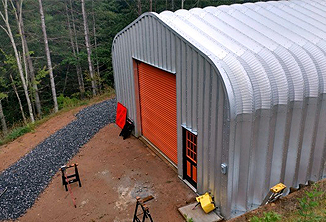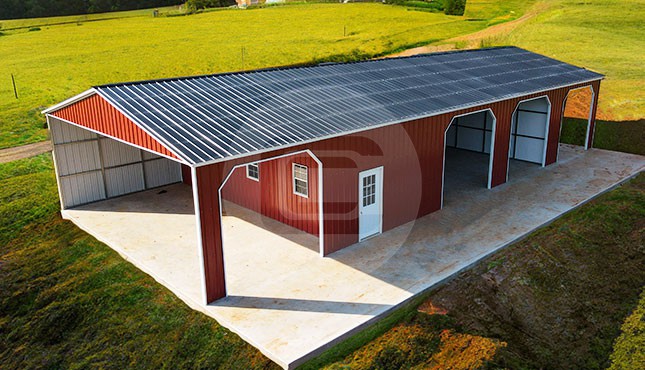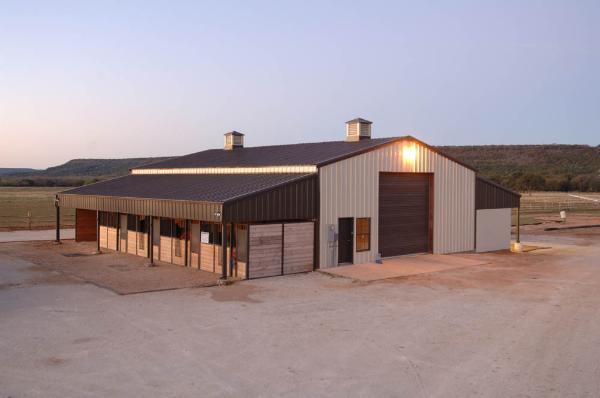High-Performance Steel Buildings: Stamina and Toughness for All Climate Issues
High-Performance Steel Buildings: Stamina and Toughness for All Climate Issues
Blog Article
Expert Overview to Steel Structure Style: Maximizing Effectiveness and Durability
In the world of construction, the choice of structure product holds critical significance in establishing the efficiency and long life of a framework. Steel, with its extraordinary strength, sturdiness, and adaptability, has actually become a preferred choice for modern-day structure style. Designers and architects are constantly checking out cutting-edge ways to harness the possibility of steel in constructing lasting and long-lasting structures. From maximizing design considerations to applying cost-effective construction strategies, the trip in the direction of making best use of performance and longevity in steel building layout is a complex one, providing a mix of sensible obstacles and imaginative solutions that propel the industry onward.
Benefits of Steel Buildings
Steel structures use unmatched toughness and cost-effectiveness compared to standard building and construction products. The strength of steel supplies superb structural stability, making it a recommended choice for buildings that need to withstand extreme climate conditions or hefty loads.
In terms of cost-effectiveness, steel structures are typically more cost effective than structures made from various other materials. The reliable construction procedure of steel buildings can lead to minimized labor prices and shorter task timelines. Steel's resilience likewise converts to decrease upkeep expenditures with time, as there is less requirement for replacements or repair work compared to conventional building products.
Layout Factors To Consider for Performance
Offered the advantages of steel structures in terms of toughness and cost-effectiveness, it is important to focus on design factors to consider that make best use of performance and longevity. When creating a steel structure for optimal effectiveness, elements such as the layout, alignment, and insulation have to be meticulously considered.

In addition, including energy-efficient systems, such as a/c, illumination, and renewable resource sources, can better improve the effectiveness of steel buildings. By incorporating these style considerations, steel frameworks can attain ideal efficiency and long life, providing cost-efficient and sustainable solutions for various construction jobs.
Structural Stability and Longevity

Additionally, the option of top notch steel and finishings is essential for long life. Corrosion-resistant finishings protect against corrosion and degeneration, prolonging the life of the framework. Routine maintenance, consisting of inspections for indications of wear or damage, is also vital for identifying and resolving problems before they jeopardize the structure's integrity. By prioritizing structural stability in the layout phase and throughout the building's life-span, owners can ensure their steel frameworks remain secure, efficient, and this contact form long lasting for several years to find.
Cost-efficient Construction Methods
Effective building and construction methods play a critical function in published here taking care of prices without compromising the high quality and stability of steel building projects. One economical approach is using pre-engineered steel structure systems. These systems are developed off-site and after that assembled on-site, reducing construction time and labor costs. Furthermore, pre-engineered steel structures are understood for their toughness and call for minimal maintenance, causing lasting price financial savings.
Another economical strategy is the design-build technique, where the design and construction stages are incorporated. This method cultivates partnership between the style and building groups, simplifying the procedure and minimizing delays and expense overruns (steel buildings). By involving all stakeholders from the start, prospective problems can be recognized and fixed early, conserving both money and time
Additionally, adopting lasting construction practices, such as making use of recycled steel and including energy-efficient features, can lead to substantial expense financial savings in the future. These practices not just minimize building waste yet also reduced operational prices through boosted power helpful hints effectiveness. To conclude, implementing cost-efficient construction methods is essential for making the most of performance and ensuring the durability of steel structure projects.
Maintenance Tips for Durability
Correct upkeep techniques are essential for ensuring the longevity and architectural stability of steel structures. Normal inspections are necessary to identify any type of indications of corrosion, damages, or wear that might endanger the structure's toughness. As component of a thorough maintenance plan, it is necessary to promptly attend to any kind of concerns that arise to avoid them from escalating and causing much more considerable damage.

Another essential upkeep suggestion is to examine the structure's fasteners, links, and welds to ensure they are safe and in great problem. Any kind of broken or loose elements need to be fixed or replaced promptly to preserve the architectural stability of the building. By executing an aggressive maintenance routine, steel building proprietors can maximize the long life and efficiency of their frameworks.
Conclusion
In verdict, steel structures offer various benefits such as efficiency, cost-effectiveness, and longevity. By thoroughly taking into consideration style elements, ensuring structural honesty, and using affordable construction approaches, steel buildings can be optimized for optimal effectiveness and longevity.
From maximizing design considerations to carrying out cost-effective building techniques, the trip towards taking full advantage of performance and long life in steel building layout is a multifaceted one, supplying a mix of functional challenges and innovative solutions that drive the market onward.
Given the benefits of steel structures in terms of longevity and cost-effectiveness, it is critical to concentrate on design factors to consider that take full advantage of efficiency and durability. When developing a steel building for ideal performance, elements such as the orientation, design, and insulation should be meticulously considered. In conclusion, carrying out cost-effective building techniques is crucial for optimizing efficiency and guaranteeing the durability of steel structure jobs.
By meticulously considering design aspects, guaranteeing architectural integrity, and utilizing affordable building methods, steel buildings can be maximized for optimal effectiveness and durability.
Report this page